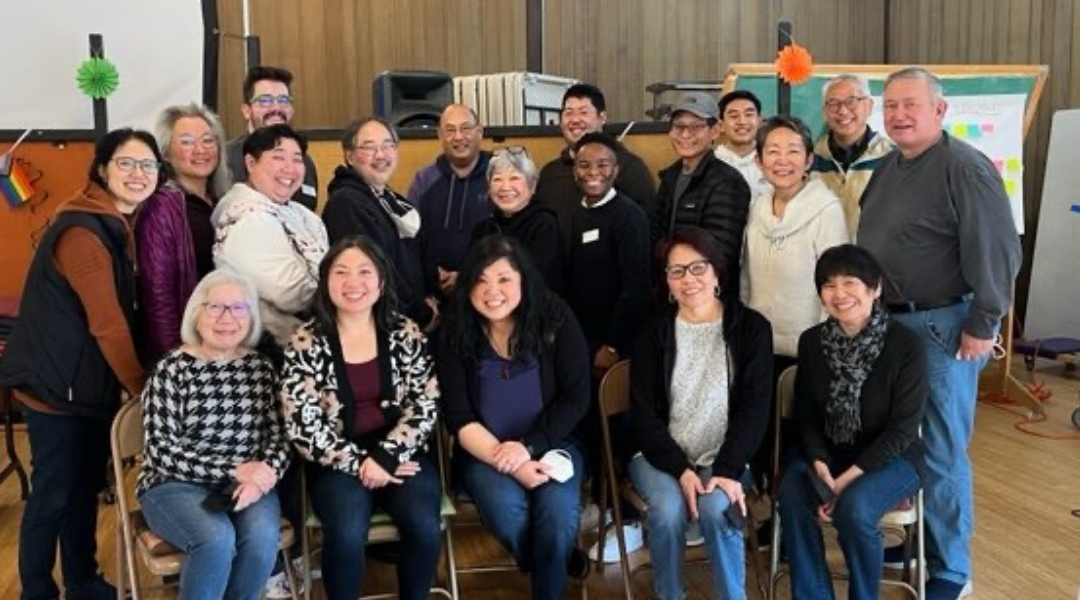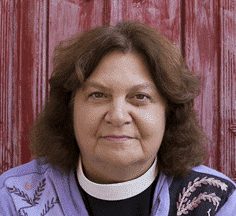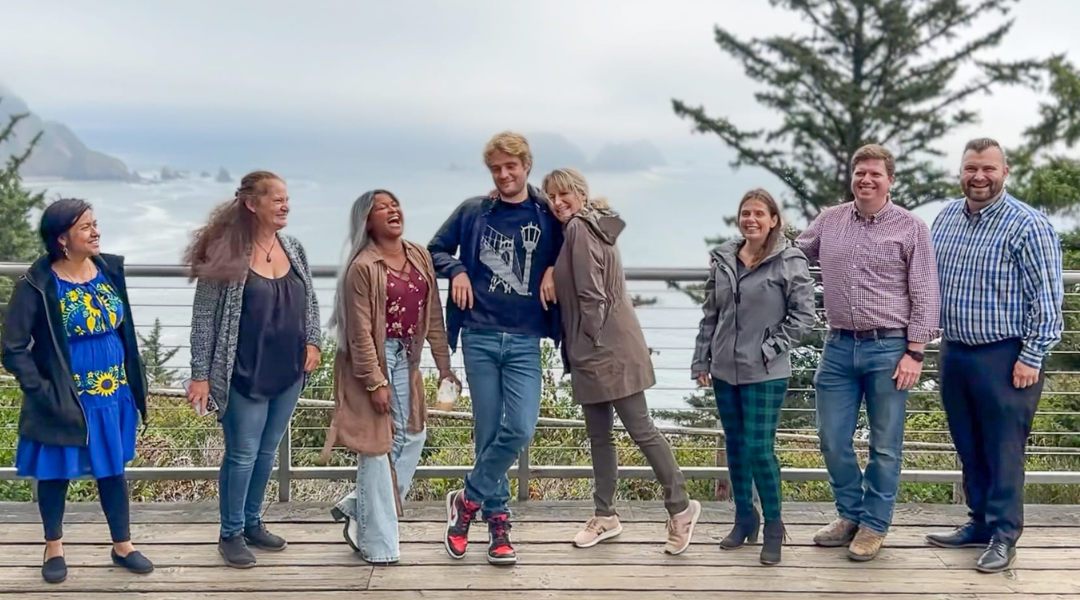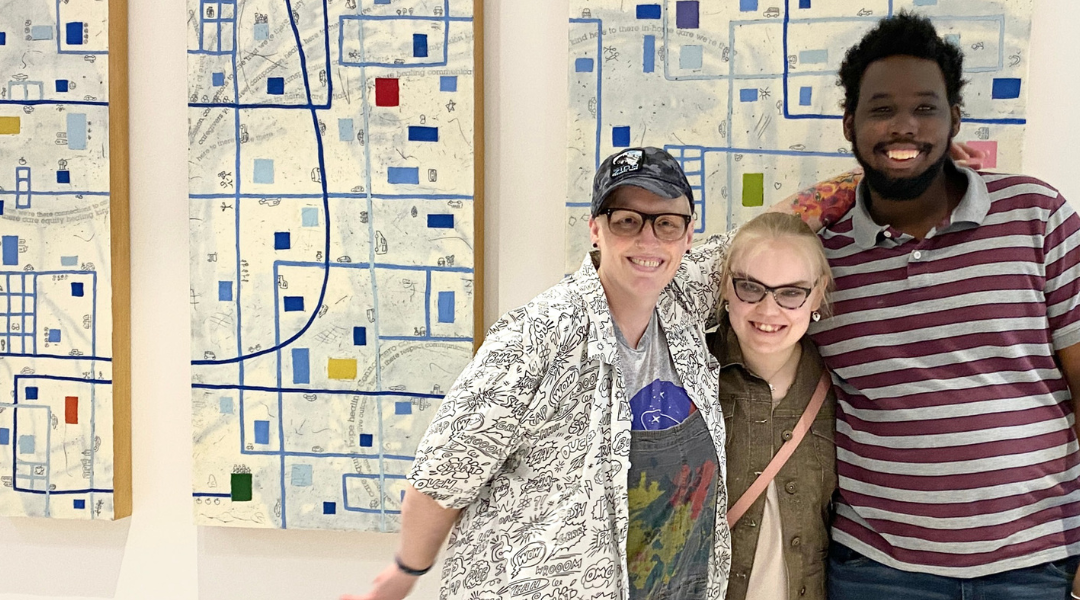On a cold day in 2006, the Reverend Violet Little walked into a public transit restroom in Philadelphia. She was exhausted. She’d been diagnosed with myasthenia gravis, a neuromuscular disease that causes weakness, vision problems and breathing difficulties. Unable to drive, she was dependent on the city’s transit system. Inside, she found a woman washing her hair in the sink. Another woman was attempting to dry her pants under a hand dryer. Little felt a deep empathy. They began to chat.
Soon a police officer arrived and told the women to get out. They quickly packed up and left. Little was stunned. Where were they supposed to go?
In that moment, she realized their vulnerability and marginalization, and felt a passionate calling to provide them with a community that would feel like a home. “My life,” Little says, “was forever changed.”
It was then she left behind her congregation of 14 years to create a refuge for the homeless that would become the “church without walls” called the Welcome Church. Years of experience working in pastoral care and psychological counseling bolstered her belief that she could. “It was like a tapestry,” says Little, 61. “It was a combination of everything in my life leading up to it. It was exactly the right time. I had the confidence to do it. I had the network to do it.”
She soon approached a Center City church asking for space to hold a drop-in center for the homeless. Since 2007, the hospitality site has offered tea, lunches, books, activities, clothing and medical services twice a week for more than 100 visitors per day.
In 2010, heartened by the success of the center—by then a nonreligious, nonprofit organization with its own board—Little became pastor of the Welcome Church, a recognized “congregation in development” of the Evangelical Lutheran Church in America (ELCA), one of the largest Christian denominations in the United States.
Since then, Little’s church has grown to include hundreds of homeless congregants and non-homeless volunteers. She’s become a bridge for people living on the streets to ELCA’s more than 10,000 congregations.
The community need is great. While chronic homelessness fell in Philadelphia between 2011 and 2012, it remains a serious problem. Nationally, nearly 110,000 people in the U.S. are experiencing chronic, long-term homelessness, according to the Substance Abuse and Mental Health Services Administration, and many more live on the streets or in shelters temporarily.
Led by an ecumenical team of Christian ministers, the Welcome Church is itself technically homeless, as it has no permanent headquarters. It holds teatime in a Methodist church, Bible Study in a Lutheran church, a women’s group in subsidized housing and worship services in a park. It also holds celebrations for members moving into permanent housing, coordinates medical services through local universities, helps people get into rehab or jobs, and offers educational services to the public on the causes of homelessness.
Once a month, rain or shine, as many as 200 people gather beneath a tree on a stretch of grass on the Benjamin Franklin Parkway for a communion service featuring songs, readings, prayers and fellowship. In winter, congregants show up even in blizzards, clearing the snow without shovels.
“I feel spiritually fed by this group. It’s like they’re my pastors, to want it so badly.” Little says. “People want something they can hold onto that says: ‘You’re not thrown away. You’re not the trash.’”
The church relies mostly on word of mouth, and services are often attended by a cross-section of the city’s homeless population. Some suffer from mental illness or addiction. Others lost their jobs in the recent economic crisis. Many are wary of accepting city agency assistance because of parole violations or immigration status. Some have homes but are disenchanted with typical church services. The Welcome Church even draws teenage volunteers from the suburbs. No questions are asked, and everyone is welcome.
“The lines get blurred between who’s a volunteer and who isn’t,” Little says, recounting the time a homeless man offered her a sandwich. “In reality, we all have much more in common than we think.”
Little is a firm believer in the idea that homelessness is less about a lack of money than it is a lack of relationships. “People tend to share resources,” Little says. “I know lots of friends who have lost their jobs or have gone bankrupt, but because of the people they knew and their community, they were able to get jobs or legal help.”
Little has spent years fostering connections between the city’s homeless and those who can help them, whether by networking to enlist volunteers, referring people to mental health services—or fighting legal battles. In 2012 she joined forces with three other faith-based groups as the plaintiffs in an ACLU lawsuit challenging the city’s decision to ban the public sharing of food on Benjamin Franklin Parkway, a grand thoroughfare lined with institutions and symbols of art, faith and government. It’s also where an estimated 175 homeless people sleep every night.
They won. The decision set a crucial judicial precedent nationwide. Similar food-sharing bans in cities in Colorado, Texas and California have since been challenged, using the Philadelphia example.
“It was a good thing because it brought awareness,” Little says. “The folks on the Parkway felt like they had a voice.”
The next big project for the Welcome Church is a social enterprise called Welcome Threads, a business run by church members that will create and sell silk-screen products with inspiring messages. The idea is modeled on programs like Thistle Farms in Nashville, where former prostitutes and recovering addicts make and sell bath products and candles, and Homeboy Ministries in Los Angeles, where former gang members operate a bakery and a restaurant.
Little estimates 40 percent of her congregants have moved off the streets into permanent housing. Most stay in touch, relying on the church to help with their transition. At a recent service in the park at which congregants huddled under the small tree amid a torrential downpour, one member, Mike, proudly reminded Little that after years of homelessness, he was celebrating his sixth month in his own home.
“I just keep coming back,” he says.
Even those who can’t come back are still acknowledged as beloved members of the Welcome Church. Many members of the congregation wear a necklace featuring the “Ecclesia cross,” a unique symbol of their connection to the community. If the coroner’s office sees this cross, the city’s Outreach Coordination Center calls Little to come identify her congregant.
Little’s passionate commitment is having a ripple effect. At a 2012 summit attended by 60 faith leaders from around the country, the Welcome Church leaders were the main speakers and facilitators. Little has mentored similar ministries in cities across the country and taken the lead in forming a network connecting those serving people in poverty. The Evangelical Lutheran Church in America recently backed this work with a $50,000 grant.
That’s significant for a Lutheran denomination that has traditionally defined congregations by their buildings and members. Faced with a congregation without walls composed of an ever-changing number of transients, the ELCA has had to grapple with how it recognizes congregations—and in the process redefine what a “church” really is.
Reverend Sean Mullen, the rector of St. Mark’s Episcopal Church, immediately saw the “church” in Little’s congregation. St. Mark’s was the first partner to fund it.
“Violet baptizes, marries and buries people that would not otherwise have the ministry of the church in their lives simply because nobody else is offering it to them,” says Mullen. “Violet has found a way to provide for deeper needs—shelter, human services, but most especially attending to their spiritual lives with dignity and respect.”
Such connections bring the Welcome Church new opportunities. They do the same for Little’s encore journey. “There are always opportunities for newness. I never thought I’d be doing this,” Little says. “One thing always leads to another. It energizes me, it nurtures me and it keeps me as a perpetual student at the same time.”




